Understanding Why Wounds Reopen & How to Prevent It - Trinity
- Blog
- Blog Detail
Why Wounds Reopen and How to Prevent It Effectively

Wounds sometimes reopen, a condition known as wound dehiscence. It happens due to reasons like infection, poor circulation, or stress on the stitches. To understand why wounds reopen and how to prevent it, proper care and addressing risk factors such as diabetes, smoking, and malnutrition are essential. This article will detail the common causes of wound dehiscence and provide practical steps to prevent it from happening.
Key Takeaways
- Wound dehiscence is caused by factors like infection, poor blood flow, and physical stress, which can disrupt the healing process and lead to serious complications.
- Preventive measures include maintaining good nutrition, managing chronic conditions, using abdominal binders, and identifying early signs of dehiscence for prompt intervention.
- Effective treatments for wound dehiscence range from antibiotics and pain relief to surgical intervention, with negative pressure wound therapy aiding in complex cases.
Proper wound healing progresses through three wound healing phases: inflammation, proliferation, and maturation. During these phases, the wound undergoes a series of complex processes, from initial clot formation and inflammatory responses to the formation of new tissue and eventual remodeling. Recognizing these stages helps identify when the healing process is off track, allowing for early intervention.
Early identification of dehiscence signs helps prevent complications like infection and evisceration. The full separation of the wound edges can lead to severe complications, including the exposure of internal organs. Being vigilant about changes at the incision site and understanding the wound healing process allows for proactive wound management and timely medical intervention.
Wound Dehiscence
Wound dehiscence refers to the partial or complete reopening of a wound due to inadequate healing, which often occurs within a week post-surgery. This condition can be both distressing and dangerous, primarily because it disrupts the wound healing process and exposes the patient to various complications. Surgical wound dehiscence involves several factors, including infection, poor blood flow, and physical stress on the wound edges, which all contribute to wound breakdown and delayed healing.
Several factors can hinder proper wound healing, leading to dehiscence. Infection is a major culprit, as it prevents the wound from progressing through the normal healing phases by keeping it in the inflammatory stage. Poor blood flow, which can be exacerbated by conditions such as diabetes and smoking, also plays a significant role. Diabetes obstructs wound healing by diminishing blood flow and increasing infection risk, while smoking narrows blood vessels and reduces perfusion, complicating the healing process. Malnutrition, by affecting cellular activities and protein synthesis, further impedes recovery.
Preventing wound dehiscence involves addressing these underlying factors. Maintaining good nutrition, managing chronic conditions like diabetes, and avoiding smoking are critical steps. Additionally, employing techniques such as abdominal binders to alleviate strain on wounds and avoiding stress or tension on stitches can significantly reduce the risk of dehiscence.
Common Reasons for Wound Reopening
Wound dehiscence often occurs due to inadequate healing, typically within a week post-surgery. Several factors can contribute to this condition, including ischemia, infection, increased abdominal pressure, diabetes, malnutrition, smoking, and obesity. Each of these factors plays a role in disrupting the wound healing process and increasing the likelihood of wound breakdown.
Malnutrition hinders healing by disrupting vital cellular activities and protein synthesis needed for recovery. Similarly, diabetes can obstruct wound healing by diminishing blood flow and increasing the likelihood of infections. Smoking compounds the problem by narrowing blood vessels, which reduces perfusion and complicates the wound healing process. Obesity can also lead to impaired blood flow and increased pressure on wound edges, contributing to complications like dehiscence.
Using abdominal binders to alleviate strain is often effective in managing superficial dehiscence. Superficial dehiscence indicates early signs of reopening, often marked by increased bleeding or drainage. Addressing these early signs promptly can prevent the progression to more severe forms of wound dehiscence and ensure proper wound healing.
Risk Factors for Poor Wound Healing
Several risk factors can lead to poor wound healing, significantly increasing the chances of wound dehiscence. Diabetes significantly increases the risk as it reduces blood flow and increases oxidative stress, leading to chronic non-healing ulcers. Smoking is another critical factor; it decreases tissue perfusion and oxygen supply, hindering the healing process and increasing the risk of complications.
Obesity impairs blood flow and increases pressure on wound edges, contributing to complications like dehiscence. Additionally, inadequate nutrition, particularly protein and vitamin deficiencies, can severely slow down the wound healing process. Adequate nutritional support during recovery, focusing on protein, vitamins, and minerals, enhances healing.
Identifying Early Signs of Wound Dehiscence
Identifying early signs of wound dehiscence symptoms is critical for effective treatment and preventing further complications. Signs of wound dehiscence include increased pain, drainage, redness, and the sensation of something giving way. These symptoms indicate that the wound is not healing properly and may be starting to reopen.
Immediate medical attention is required if there are signs of evisceration, fever exceeding 100.4°F (38ºC), or any noticeable opening or separation of stitches.
Regularly monitoring for signs of infection and other symptoms helps address issues before they lead to dehiscence.
Types of Wound Dehiscence
Wound dehiscence can be categorized into partial and complete dehiscence. Partial dehiscence involves the separation of only the outer layers of tissue. This type of dehiscence can often be managed with less invasive treatments and close monitoring.
Complete dehiscence results in the separation of all wound layers, potentially exposing internal tissues. This severe condition often necessitates immediate surgical intervention.
Stress or tension exceeding the strength of stitches can lead to wound separation, often due to movements like coughing or lifting.
Complications Arising from Wound Dehiscence
Complications from wound dehiscence can range from infections and prolonged healing times to severe cases requiring further surgeries. Chronic alcohol consumption and stress can exacerbate these complications by impairing immune responses and delaying inflammatory reactions crucial for wound healing. Monitoring for signs of infection such as fever, increased redness, and swelling is vital as these symptoms may indicate dehiscence.
In severe cases, wound dehiscence can escalate to emergencies if vital structures are exposed. This can lead to increased scarring, longer recovery periods, and a higher likelihood of requiring additional surgical procedures.
Effective Treatment Options for Wound Dehiscence
Effective treatment options for wound dehiscence include:
- Pain relief
- Antibiotics
- Surgical debridement
- Specialized dressing techniques
Negative pressure wound therapy (NPWT) enhances healing by providing secondary closure and removing exudate and bacteria from the site. This method is particularly beneficial for complex wounds and can significantly speed up the healing process.
Surgical intervention may include debridement, removing infected tissue, and suturing, particularly in cases of complete wound dehiscence. In mild cases of partial wound dehiscence, antibiotics and proper wound care are typically sufficient to manage the condition. These treatment options aim to address the underlying issues and promote proper wound healing.
Strategies to Prevent Wound Dehiscence
Various proactive measures can often prevent wound dehiscence. Controlling blood glucose, increasing dietary protein, and avoiding heavy lifting are essential strategies in preventing wound dehiscence. Proper nutrition and avoiding activities that strain the wound significantly reduce the risk of reopening.
Surgical techniques, including careful suturing and avoiding excessive tension on wounds, can also reduce the chances of dehiscence. Using splinting techniques during activities like coughing helps protect the wound and minimize strain. Avoiding tension and movement at the wound site supports the healing process and reduces the risk of dehiscence.
The Role of Proper Wound Care in Healing
Proper wound care prevents complications such as infection, which can hinder healing and cause reopening. Keeping the wound clean and dry is crucial to avoid complications. Protecting the wound with sterile dressings prevents contamination and supports the healing process.
Effective wound management also involves using appropriate suture material tailored to the type of tissue, which can enhance healing. Monitoring for signs of infection ensures timely intervention and prevents complications.
When to Seek Professional Help
Seek immediate medical attention for wound dehiscence to evaluate and treat the wound before it worsens. If a wound shows signs of evisceration, it should be covered with a sterile saline dressing and medical help should be sought immediately.
Trinity Wound Care, a clinic in Las Vegas, Nevada, specializes in treating surgical dehiscence and other types of wounds.
Contact Us Today
Summary
In summary, wound dehiscence is a serious condition that requires prompt attention and proper management. By understanding the causes, risk factors, early signs, and effective treatment options, you can take proactive steps to ensure optimal wound healing and recovery. Remember, proper wound care and preventive measures are key to preventing wound dehiscence.
Stay vigilant, seek professional help when needed, and take charge of your healing journey.
Frequently Asked Questions
What is wound dehiscence?
Wound dehiscence is the partial or complete reopening of a wound due to insufficient healing, typically occurring within a week after surgery. Recognizing this condition early is crucial for effective management and prevention of complications.
What are the early signs of wound dehiscence?
Early signs of wound dehiscence include increased pain, drainage, redness, and a sensation of something giving way. It is crucial to monitor these symptoms closely for timely intervention.
How can wound dehiscence be prevented?
Wound dehiscence can be effectively prevented by controlling blood glucose levels, increasing dietary protein intake, avoiding heavy lifting, and employing splinting techniques during physically strenuous activities. These steps are crucial for promoting optimal healing and stability of the wound site.
What treatment options are available for wound dehiscence?
For wound dehiscence, effective treatment options are pain relief, antibiotics, surgical debridement, and negative pressure wound therapy. It’s essential to choose the right approach based on the severity and specifics of the case.
When should I seek professional help for wound dehiscence?
You should seek professional help for wound dehiscence immediately if you notice any separation of stitches, signs of evisceration, or a fever exceeding 100.4°F (38°C). Prompt medical attention is crucial to prevent complications.
PERSONALIZED HEALTHCARE
Bringing Healthcare to Your Doorstep
Receive custom-tailored treatment plans that include initial care, ongoing follow-ups, and comprehensive treatment for underlying causes, delivered to you no matter where you reside.



About Us
Trinity Wound Care is dedicated to providing compassionate, comprehensive wound care and support services, ensuring every patient receives personalized treatment for optimal healing and well-being.
Quick Links
Contact Info
- (725) 205-2457
- admin@trinityhealthlv.com
- 6655 W. Sahara Ave A218, Las Vegas, NV 89146